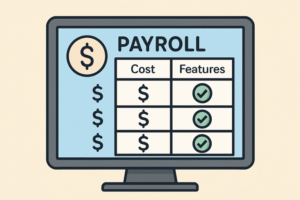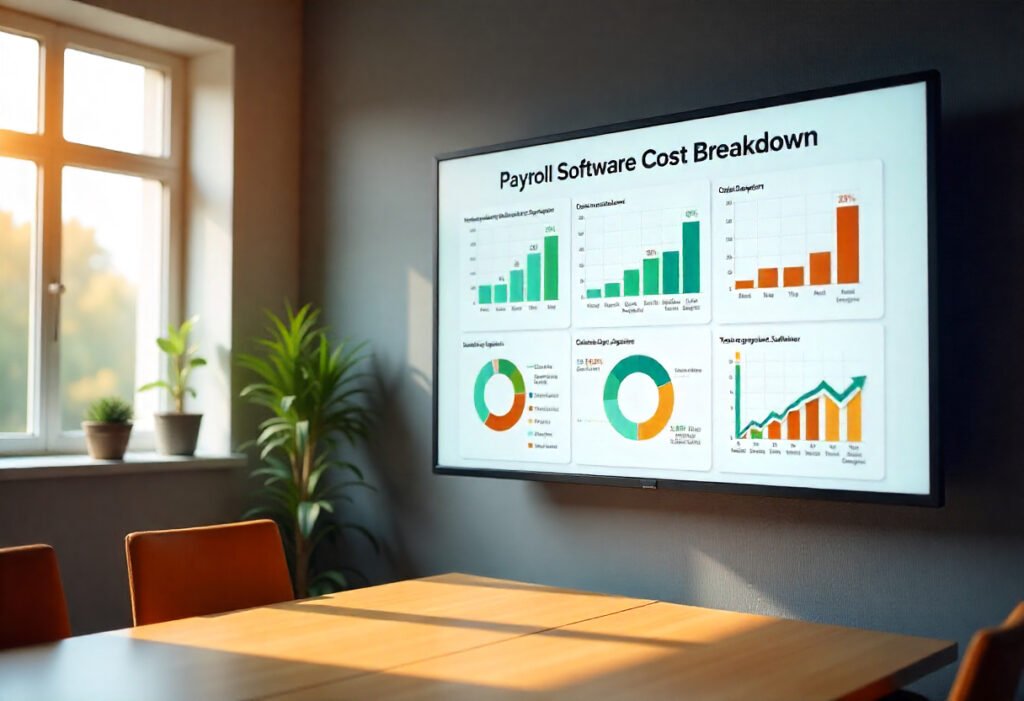Key Takeaways
- Payroll software costs vary significantly based on pricing structures, feature sets, and business size.
- Standard pricing models include subscription-based, tiered, and per-employee pricing.
- Understanding hidden fees, such as setup or compliance costs, is crucial before committing.
- Choosing the right payroll software requires evaluating your business’s unique needs and growth plans.
Table of Contents
- Introduction
- Understanding Payroll Software Pricing Models
- Factors Influencing Payroll Software Costs
- Hidden Fees to Watch Out For
- Comparing Popular Payroll Software Options
- Tips for Choosing the Right Payroll Software
- Conclusion
Introduction
Managing payroll is a fundamental responsibility that requires accuracy, compliance, and efficiency. For many businesses, leveraging dedicated payroll software is the most effective way to automate this vital process, save time, and minimize errors. Before implementing a solution, however, it is essential to understand what you can expect to pay—and which services justify those costs. Establishing an informed approach helps you avoid uninformed decisions and budget surprises. For businesses interested in more specialized solutions, a Canadian payroll system offers localized support and compliance advantages tailored to the Canadian market.
Payroll software pricing structures are not one-size-fits-all. Plans and services vary based on company size and feature requirements. As your business grows and operations become increasingly complex, having the right payroll platform is crucial to maintaining compliance and financial security.
While price is a significant factor, ease of use, integration capabilities, and vendor reputation should also weigh into your decision. Modern payroll software can address much more than basic pay processing, encompassing tax calculations, benefits administration, and customized reporting.
Because the marketplace for payroll software is diverse, business owners should compare multiple providers and seek trustworthy advice. The latest trends in payroll technology, such as automation and cloud-based solutions, are expanding capabilities at every price point. Learn more about choosing payroll software from this comprehensive SHRM resource.

Understanding Payroll Software Pricing Models
Payroll software providers typically offer several different pricing structures:
- Subscription-Based Pricing: The most common model combines a flat monthly or yearly fee with an extra charge for each employee (e.g., $40 per month base + $6 per employee).
- Tiered Pricing: Vendors may offer multiple plans, from simple payroll processing to advanced packages with additional HR tools and benefits administration.
- Per-Employee Pricing: Some vendors charge only for the number of employees processed through the system—often between $2 and $12 per employee monthly.
Determining which model best suits your organization depends chiefly on your headcount, growth expectations, and the administrative functions you want to automate.
Factors Influencing Payroll Software Costs
- Number of Employees: As your business expands, total fees typically increase based on per-employee charges.
- Feature Set: Advanced options like automated tax filing, benefits management, compliance updates, and time tracking translate to higher monthly rates.
- Integration Capabilities: Connecting payroll solutions with accounting, time tracking, or HR systems may incur extra costs.
- Compliance Updates: Regular updates to align with changing tax laws or provincial/federal regulations may include additional fees to ensure legal accuracy.
Taking the time to assess your most pressing needs—and any likely future changes—can help you avoid overpaying for unused functionalities.
Hidden Fees to Watch Out For
While providers are upfront about base costs, some often-overlooked charges can result in an unexpectedly high bill:
- Setup Fees: Charges for initial implementation and training staff on the new system.
- Integration Expenses: Fees for connecting your payroll platform with existing business tools or importing historical payroll data.
- Compliance and Regulatory Update Fees: The additional cost to ensure tax and legal compliance with the latest laws.
- Pay Correction and Adjustment Charges: Fees for making retroactive corrections or edits to already-processed payrolls.
Always review vendor contracts and ask directly about hidden or optional fees during the purchasing process.
Comparing Popular Payroll Software Options
OnPay, Gusto, and Paychex Flex are three leading payroll software options, each designed to simplify workforce management while offering unique advantages. OnPay, priced at $40 monthly plus $6 per employee, provides full-service payroll, tax filings, and benefits administration, making it ideal for small businesses seeking comprehensive support. Gusto, at $49 monthly plus $6 per employee, combines payroll with benefits, time tracking, and HR tools, delivering an all-in-one solution. Paychex Flex, starting at $39 monthly plus $5 per employee, focuses on payroll processing, tax administration, and new hire reporting, appealing to companies prioritizing compliance and streamlined employee onboarding.
For additional vendor comparisons and the most up-to-date pricing trends, check out the latest HR software pricing guide from Forbes.
Tips for Choosing the Right Payroll Software
- Assess Your Business Needs: Identify which features are critical for your operations, such as direct deposit, automated tax filing, or HR add-ons.
- Evaluate Scalability: Consider your current size and how your chosen software can accommodate future employee growth and feature requirements.
- Check for Hidden Fees: Always clarify with vendors what’s included in the base price, and request a detailed breakdown of any fees that may apply later.
- Read Reviews: Research customer feedback on product reliability, customer service, and integration experiences to guide your decision.
Conclusion
Selecting payroll software goes beyond a basic purchase—it’s a strategic investment in your business operations’ accuracy, efficiency, and long-term stability. Each software option comes with a unique pricing model, ranging from subscription-based plans to tiered packages, and understanding how these structures align with your budget is crucial. Beyond price, factors such as scalability, integration with existing systems, and compliance with evolving regulations are crucial in ensuring value. Conducting diligent comparisons, carefully reviewing contract terms, and seeking feedback from trusted industry experts can help you avoid hidden pitfalls. Choosing wisely means your payroll system will meet current needs and adapt as your workforce expands. With the right solution, payday becomes smoother, stress-free, and a true asset to your employees and business growth.



